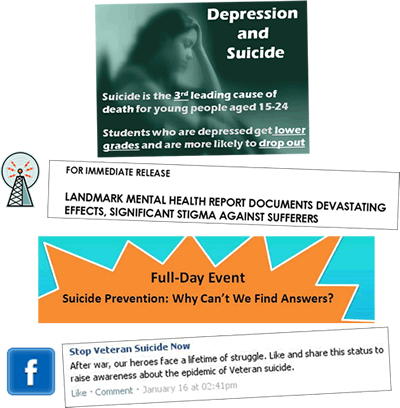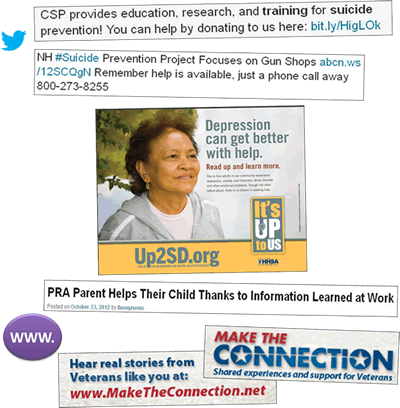The Positive Narrative component of the Framework for Successful Messaging is designed to increase how much public messaging is “promoting the positive” about suicide prevention, including that:
- there are actions that people can take to help prevent suicide
- prevention works
- resilience and recovery are possible
- effective programs and services exist, and
- help is available.
This idea is at the heart of the Action Alliance priority ”to change the national narratives around suicide and suicide prevention to ones that promote hope, connectedness, social support, resilience, treatment and recovery.”
Why promote a Positive Narrative?
Public communications help create stories or “narratives” about suicide and suicide prevention in the public’s mind. Too often, public messaging conveys negative narratives about suicide, for example, that suicide is a common or acceptable response to stressful situations, that suicidal thoughts inevitably lead to death, or that nothing can be done about it.
To illustrate, look at the two groupings of messages below.
What is the overall impression that you get from each? Which grouping makes you believe that suicide is preventable?
Group 1

Group 2

Note that some narratives pertain to suicide generally. For example, emphasizing data about the extent and severity of suicide without discussing actions or solutions can imply that suicide is unsolvable. Other narratives take the form of a harmful social script for specific groups, for example that attempting suicide is a common or even expected experience for LGBT teens. Or that severe impairment, despair, and suicide is a more typical experience among U.S. military and veterans than resilience and survival. In fact the opposite is true. This does not mean we should minimize the very real stories of struggle and death. While not concealing the very real problem and the toll it takes, we have to be careful not to portray suicide as inevitable or hopeless.
What about the media’s role in creating narratives?
There’s no question that news and entertainment media often convey negative narratives about suicide, especially given the newsworthiness of sensational deaths, system failures, and the like. Educating media professionals about the media recommendations is a key suicide prevention activity and we should continue these efforts. However, the media’s negative focus makes it even more important that the rest of us emphasize the Positive Narrative.
Given the media’s emphasis on the negative, it is even more critical for prevention practitioners and others messaging about suicide to counterbalance the media’s messages with ones that highlight actions, solutions, successes, and resources.
